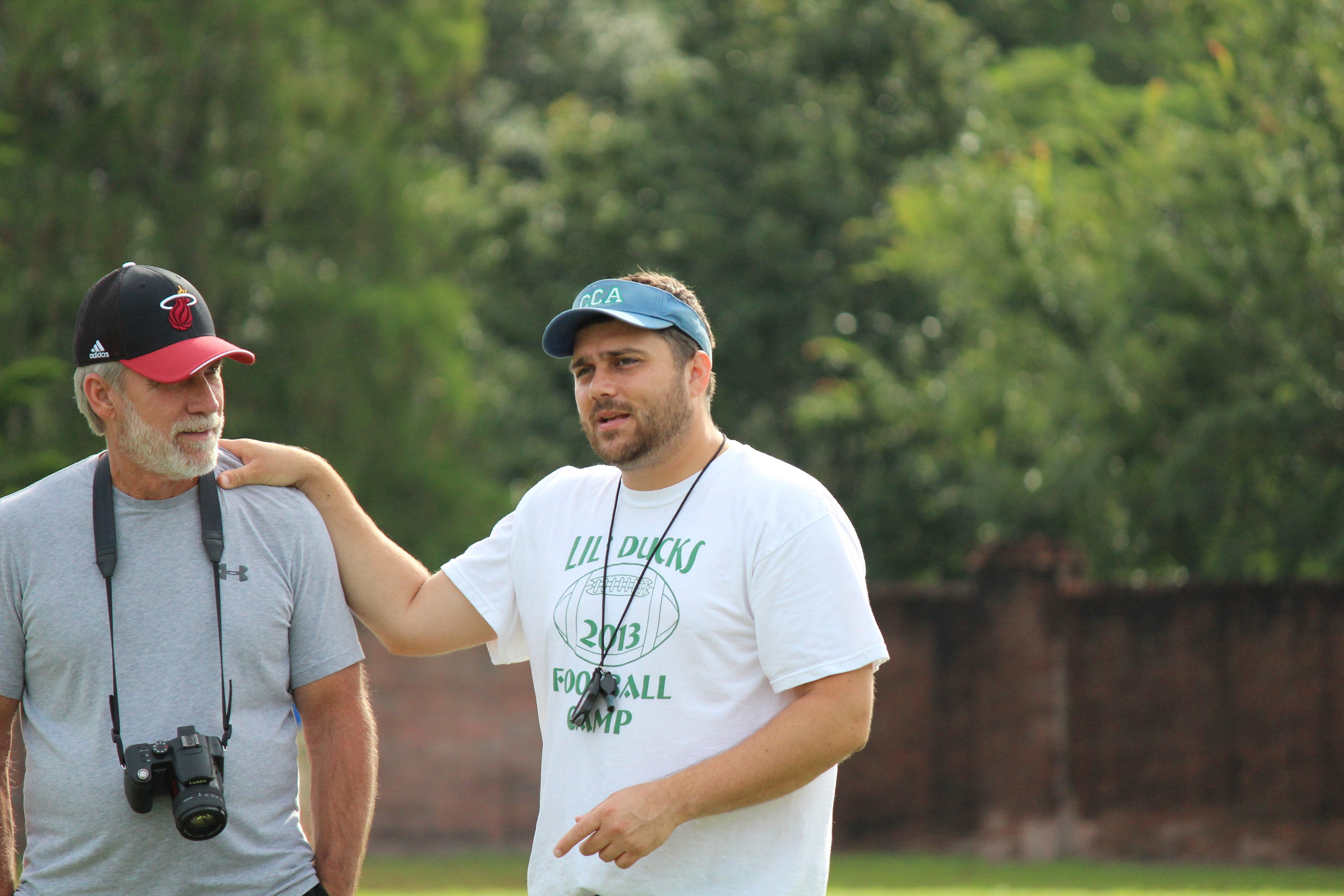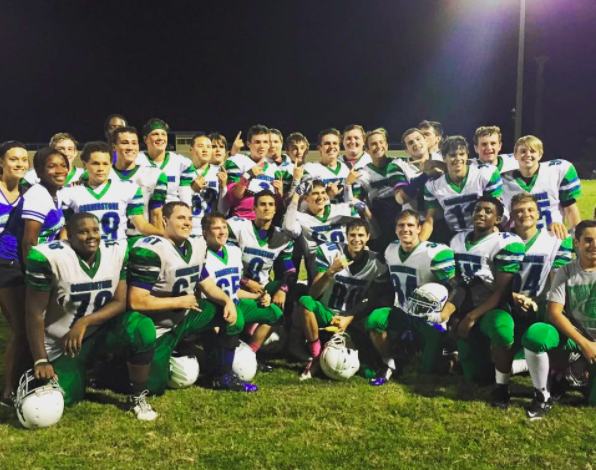NIL Developments: Coach and Player Outcomes
What is NIL and what does this have to do with college sports?
NIL (or Name, Image, and Likeness) is a recent development in college sports that allows college athletes to be compensated for their work in their sport. Since its establishment in 2021, there have been numerous developments that have altered or completely changed how the system works, which is one of the main reasons that it is such a hot topic right now. To fully capture NIL and be able to discuss its implications, it is important to understand the full timeline in the last few years. On3 has provided the timeline as such:
July 1, 2021: Following a lost case by the NCAA, states and the NCAA began to create policies to enact NIL policies
August 2021: NIL Collectives form, which are essentially booster-backed banks that funnel money back to athletes (usually from donors or sponsors)
December 2021: The transfer portal starts becoming leveraged by NIL funds, and athletes start to be recruited for monetary value
January 5, 2022: The official On3 NIL valuation launches, which projects annual NIL projections for high school and college athletes
March and April, 2022: Star players begin to earn 6 figures in NIL, with a select few amassing 7 figures
May and August, 2022: Policy makers and high-standing NCAA officials seek federal regulation and declaring employment statuses for athletes under NIL
October 10, 2022: Nike unveils numerous endorsement deals
May 17, 2023: EA Sports begins talks to facilitate NIL funds for a new college football game, paying $500 per player enrolled (with top-tier athletes on promotional material earning much more)
Summer 2023: NCAA President Charlie Baker, the SEC, Coaches, and NIL Collectives lobby for an NIL mandate
December 15, 2023: Due to a West Virginia suspension of transfer restrictions, the NCAA publishes a memo that no waiver will be needed for immediate play of multi-time transfers
January 10, 2024: The Division 1 council creates a standard NIL contract and registry with agents to eliminate the number of bad agents in the NIL space
January 11, 2024: First NIL sanctions are imposed on then Florida State offensive coordinator Alex Atkins
February 2, 2024: Big Ten and SEC create a joint advisory group
May and June, 2024: House v. NCAA is settled, which includes a new revenue-sharing model for universities that allows for direct paying of athletes. For the first year, Universities will be capped at $20.5 million, with a 4 percent annual rise over two years and then is reevaluated every three years for the entirety of the 10-year settlement. An NIL portal is also established (NIL Go) which facilitates revenue sharing and ensures compliance is followed. Additionally, athletes who played from 2016 to the present will receive a combined total of $2.7 billion in back pay (nothing has been paid out due to litigation over equal sharing of the money)
June 6, 2024: Roster limitations are imposed, and scholarship caps are abolished
July 2025: President Trump signs executive order of the name “Saving Collegiate Athletes”, aimed at adding more protections in college athletes and disallows third-party, pay-for-play payments while simultaneously allowing fair market valuations to pay players under legitimate deals. This deal will require more action in the coming months.
What does this mean for coaches and athletes?
The timeline is very indicative of how much discourse is happening in regard to NIL and how this will impact college sports for years to come. For coaches, there are two sides to the coin. The first side is the coaches of top-tier programs (such as most Power 4 schools). The second side of the coin are coaches of lower-tier programs (such as low-FBS schools, FCS schools, and even Division 2 and Division 3 schools).
For Power 4 Programs:
Recruiting is a challenge for any level of program for college athletics, but NIL and the transfer portal has drastically changed the process for recruitment. To begin with, many athletes of notoriety are only chasing money, and not program success. Essentially, athletes are shopping around to see who the highest bidder is, and this eliminates many programs from any recruits of high rank. Coaches must shift their form of recruitment from success based to monetary based, which creates many issues. For programs like Florida State, Alabama, Ohio State, or many other programs of notoriety, paying players ridiculous sums of money is not an issue. The main issue arises with schools like Texas Tech, whose NIL payout plan is upwards of $55,000,000. While the new revenue sharing model will possibly limit how much of the funding above the $20.5 million is accepted, they will likely skyrocket as a program recruiting top-tier talent. Most recently, they paid pitcher NiJaree Canady back-to-back 7 figure deals after she transferred from Stanford.
For Smaller Schools:
Using the NiJaree Canady NIL deal as a segway, this deal is one of the red flags that have arisen for coaches and staff of smaller schools. With big schools being able to offer lump sums of money for players to transfer in, the talent pool is being restricted to the top 5% of teams. Like Stanford losing a key player due to money, other schools have begun losing their players as well in search of more in NIL. Since there are no restrictions on transferring yet, players can continue to move schools if more deals become available, and the idea of team loyalty is a thing of the past. Smaller schools will likely begin to look at the transfer portal and lower-division players to try and fill their rosters, but the looming issue of talent transferring to better schools will always be a reality.
What do roster limits mean for coaches and athletes?
Essentially, walk-ons have been eliminated from higher-tier programs. The reason for this is that, in the case of football, the maximum number of scholarships has increased from 85 to 105, but the maximum number of roster spots has dropped from around 110-120 for big programs. Since about 10-15 players are being dropped, many opportunities for walk-ons are no more. Since walk-ons are losing their opportunities at big schools, they will likely begin to trickle down into lower-tier programs or even divisions. Additionally, since only top-tier players will be slotted in the rosters of most Power 4 programs, the divide between lower and higher-tier programs will grow even further. Since schools like Akron or even Wyoming cannot afford the same caliber as somewhere as Alabama, the competitiveness of those teams will continue to decrease.
What does this mean for transfers?
As of September 2025, for football, the NCAA has finally coincided with a one-time transfer portal window for football. This move eliminates the spring window, moving to a 10-day period beginning January 2nd, which is the day after the CFP quarterfinals. While not in effect yet, these changes are expected to be voted on before October 1st and are presumed to be put into effect. Finally, there is also a proposed dead period for the month of December, prohibiting on/off campus visits or evaluations by recruiting staff and coaches.
Along with the changes, graduate transfers will no longer be permitted to enter the portal before underclassmen, which was traditionally done in October. It remains to be seen if there will be a reduction of undergraduate players recruited in the transfer portal due to their inexperience, or if there will be a reduction in graduate players recruited in the transfer portal due to their limitations of eligibility.
Final Thoughts
While paying players for their contributions to college athletics is a must, there is an abundance of challenges that go beyond just the players. For coaches, their entire strategy of recruitment and retaining of players has changed. Coaches and recruiters can no longer bank on a player staying due to culture or success and must rely on a constant influx of NIL funds to maintain high-caliber teams.
Additionally, a shorter transfer portal window and likely influx of players into the transfer portal seeking bigger contracts will likely create challenges for staff across the country. The biggest question mark that remains comes from the near-daily discussions about transferring and the nature of NIL, since none of the decisions are concrete yet. The next 6-12 months will be pivotal in analyzing the long-term impact of NIL, as more regulations and answers are expected soon.
1 Nakos, P. (2024, February 26). Nil timeline: Key moments that have defined the era. On3 NIL.https://www.on3.com/nil/news/nil-timeline-key-moments-ncaa-greg-sankey-charlie-baker-livvy-dunne-jaden-rasahda-nico-iamaleava/
2 Moore, N. (2025, September 5). The Future of NIL After the House Settlement. American Bar Association.https://www.americanbar.org/groups/young_lawyers/resources/tyl/practice-areas/future-of-nil-after-house-settlement/
3 Recruiting, N. C. (2025, July 11). NCAA scholarship and Roster Limits: Key changes explained. House v.NCAA Settlement Explained: Impacts on Scholarship Limits, Athlete Pay & Recruiting.https://www.ncsasports.org/blog/ncaa-scholarship-roster-limits-2024
4 Dorsey, M. (2025, June 10). Texas Tech stuns CFB World with massive $55,000,000 player payout plan in 2025. College Sports Network. https://collegefootballnetwork.com/texas-tech-stuns-cfb-world/
5 McGregor, G. (2025, June 6). Nijaree Canady Nil Deal, explained: How texas tech star became Softball’s first $1 million player. Sporting News. https://www.sportingnews.com/us/college/news/nijaree-canady-nil-contract-texas-tech-softball-1-million/a951279b21a1a4e89740d3ec
Subscribe to our blog
Subscribe to receive the latest blog posts to your inbox every week.
Related posts

Is GPS Technology Worth It?

Program Culture is Built on the Field
